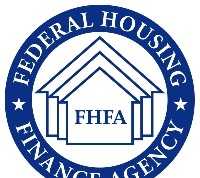Actual Cash Value Must Be Defined When Appraising Properties for Insurance Purposes: The Appraisal Journal
CHICAGO, IL – November 27, 2013 – (RealEstateRama) — The relationship between actual cash value and fair market value needs to be clearly defined by real estate appraisers called upon to develop an opinion of value for insurance purposes, especially in legal situations between the insurer and insured, according to an article published last week in The Appraisal Journal.
Real estate appraisers in
|
Real estate appraisers in
|
The Appraisal Journal is the quarterly technical and academic publication of the Appraisal Institute, the nation’s largest professional association of real estate appraisers. The materials presented in the publication represent the opinions and views of the authors and not necessarily those of the Appraisal Institute.
“The Relationship between Actual Cash Value and Market Value,” by David L. Clark, MAI, and Larry W. Stark, MAI, examines the lack of consensus in the definition of actual cash value, or ACV, by insurance companies and how it has led to a long history of confusion and litigation on this type of insurance policy, as well as how appraisers can help develop clearer terms for what constitutes the ACV of a property.
According to the article, ACV insurance policies are often used to save money on premiums, since they are usually cheaper to issue. They may also be used for high-risk assets, such as buildings in need of extensive renovation or those in hazard-prone areas where replacement cost policies may be harder to purchase.
The article presents three approaches courts commonly use to measure the ACV of a property to settle legal disputes between an insurance company and the insured: determine fair market value, or the price a willing buyer would pay to buy property from a willing seller in a free market; calculate replacement cost less depreciation; and determine value set by the broad evidence rule, which requires the insurer to consider added evidence like the taxable value of the property, prior attempts to sell the property and economic concerns.
The authors suggest that although ACV can be defined, insurance companies rarely do because they want to reserve the right to dispute the claim of the insured — and appraisers should develop a clear definition of ACV approximate to market value, and defend that definition with knowledge of the inconsistencies in definitions supported by other sources.
David L. Clark, MAI, is vice president of National Valuation Consultants, Inc., in Centennial, Colo., and a general certified appraiser in Colorado. He has published articles in a number of journals, including The Appraisal Journal, Real Estate Review, Real Estate Finance, Mortgage Banker, Real Estate Finance Today and Tax Management Real Estate Journal.
Larry W. Stark, MAI, is president of National Valuation Consultants, Inc. He is a general certified appraiser in Colorado and has more than 30 years of experience. He has a bachelor’s degree in business, management and economics from the University of Texas at Austin.
Read “The Relationship between Actual Cash Value and Market Value,” in the Fall 2013 issue of The Appraisal Journal.
Also in The Appraisal Journal’s Fall 2013 issue:
“Valuation of Solar Photovoltaic Systems Using a Discounted Cash Flow Approach,” by Geoffrey T. Klise, Jamie L. Johnson, and Sandra K. Adomatis, SRA, discusses how to use the PV Value® tool and the income approach to value homes with solar panels, especially when comparable sales are not available.
“Common Statistical Errors and Mistakes: Valuation and Reliability,” by George Dell, MAI, SRA, offers a suggested approach for the use of statistics in appraisal practice based on the twin goals of accuracy and precision.
# # #
Subscribe to the Appraisal Institute’s RSS feed to stay connected with the latest news from the Appraisal Institute, and follow us on Facebook, Twitter, LinkedIn, YouTube and our blog, Opinions of Value.
The Appraisal Institute is a global professional association of real estate appraisers, with nearly 23,000 professionals in almost 60 countries throughout the world. Its mission is to advance professionalism and ethics, global standards, methodologies, and practices through the professional development of property economics worldwide. Organized in 1932, the Appraisal Institute advocates equal opportunity and nondiscrimination in the appraisal profession and conducts its activities in accordance with applicable federal, state and local laws. Individuals of the Appraisal Institute benefit from an array of professional education and advocacy programs, and may hold the prestigious MAI, SRPA and SRA designations. Learn more at www.appraisalinstitute.org
f Facebook Comments |

















